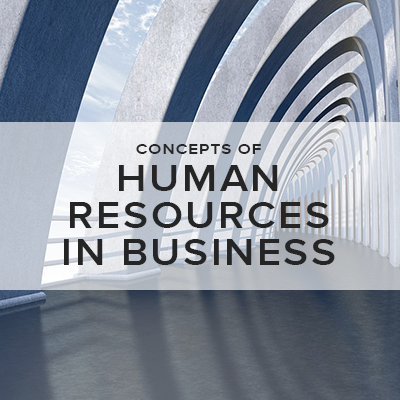Human Resource Concepts
 Concepts of human resource management have evolved overtime from viewing the workers of a company as a cog in machine to being viewed as an integral part of an organization that is not easily replaced. Companies around the world rely on people to perform important tasks, job functions, and duties to accomplish organizational objectives. Dr. Edward Deming, the father of quality management, created universal standards for quality management that are referred to the fourteen points on quality management. Many of Dr. Deming’s points relate to employees being at the core of a quality business, such as on-the-job training, leadership, driving out fear, instituting education, involving all workers, and more (American Society for Quality, 2019). Although the points do not directly state employees are a very valuable resource, the points in many ways imply that employees are valuable and important. Having a higher regard for the value of employees has become increasingly more important for industries that have become more service-oriented. People have become more important for service-based companies because it typically takes a person or people to render a service for a customer.
Concepts of human resource management have evolved overtime from viewing the workers of a company as a cog in machine to being viewed as an integral part of an organization that is not easily replaced. Companies around the world rely on people to perform important tasks, job functions, and duties to accomplish organizational objectives. Dr. Edward Deming, the father of quality management, created universal standards for quality management that are referred to the fourteen points on quality management. Many of Dr. Deming’s points relate to employees being at the core of a quality business, such as on-the-job training, leadership, driving out fear, instituting education, involving all workers, and more (American Society for Quality, 2019). Although the points do not directly state employees are a very valuable resource, the points in many ways imply that employees are valuable and important. Having a higher regard for the value of employees has become increasingly more important for industries that have become more service-oriented. People have become more important for service-based companies because it typically takes a person or people to render a service for a customer.
Traditional Views of Human Resource Management
Some of the traditional scientific views of human resource management included systems like the assembly line. Scientific management processes, like the assembly line, attempted to separate job functions into their most simple elements and motions that would require a minimal levels of employee skill (Russel & Taylor, 2017). These systems placed little value on the employee and typically viewed workers as replaceable and unimportant. These systems aimed to give companies the ability to quickly replace employees with the least amount of job training and new hire expenses. Scientific management systems had proven successful in mass producing products with people performing robotic-like functions to accomplish the task. While this system offered some advantages to companies there were also disadvantages of scientific management. Some of the disadvantages of scientific management relates to aspects of human resources. Workers in scientific management systems typically became dissatisfied, physically and mentally fatigued, felt a general lack of responsibility, and found there was little opportunity for advancement (Russel & Taylor, 2017). These systems were likely popular during the industrial revolution for several reasons. Some of these reasons might have included that the main line of business for many companies focused on manufacturing projects. In general, product manufacturing involves making identical products for consumption, which would require a mechanical precision and robotic-like functions to assemble. Over time, the repetition of mundane tasks that have been simplified to their most basic form was probably the reason why many employees felt undervalued and became dissatisfied in their jobs.
Perspectives from the Past
Around the late 1970s, manufacturing employment declined as service industries became more popular in the United States (Short, 2014). Around this time, there was an overall increase in companies that began to better recognize the importance and value of their employees. Employee motivation became increasingly more important to increase sales and achieve better results. Psychologists and human behavioralists developed theories for employee motivation, such as Maslow’s hierarchy of needs, McGregor’s theory X and theory Y, and Herzberg’s employee hygiene motivation theories. These early studies eventually lead to greater discoveries and modern theories for what motivates employees in the workplace. Over time, this evolution of understanding motivational sources of employees lead to contemporary trends in human resource management.
Modern Views
The modern view of contemporary trends in human resource management aim to place more emphasis on employees as a core part of a business. In contrast to scientific management systems, these new systems view people as a vital and essential parts of the company. Companies now turn to employee development methodologies such as job training, cross training, job rotation, job enrichment, empowerment, team building, flexible work schedules, alternative workplaces, telecommuting, temporary and part-time workers, and employee compensation to better motivate, retain, and improve the performance of their employees. Within these development methodologies are tactical steps and subprocesses that human resources use to add more value for their employees.
References
American Society for Quality (2019). W. Edwards Deming’s 14 points for total quality management. Retrieved from https://asq.org/quality-resources/total-quality-management/deming-points
Russel, R. & Taylor B. (2017). Operations and supply chain (9th ed.). Danvers, MA: John Wiley & Sons, Inc. Retrieved from https://purdueuniversityglobal.vitalsource.com/#/books/9781119320975/cfi/6/18!/4/2/2/2/2@0:0
Short (2014). The epic rise of america’s service industry. Business Insider. Retrieved from https://www.businessinsider.com/growth-of-us-services-economy-2014-9


